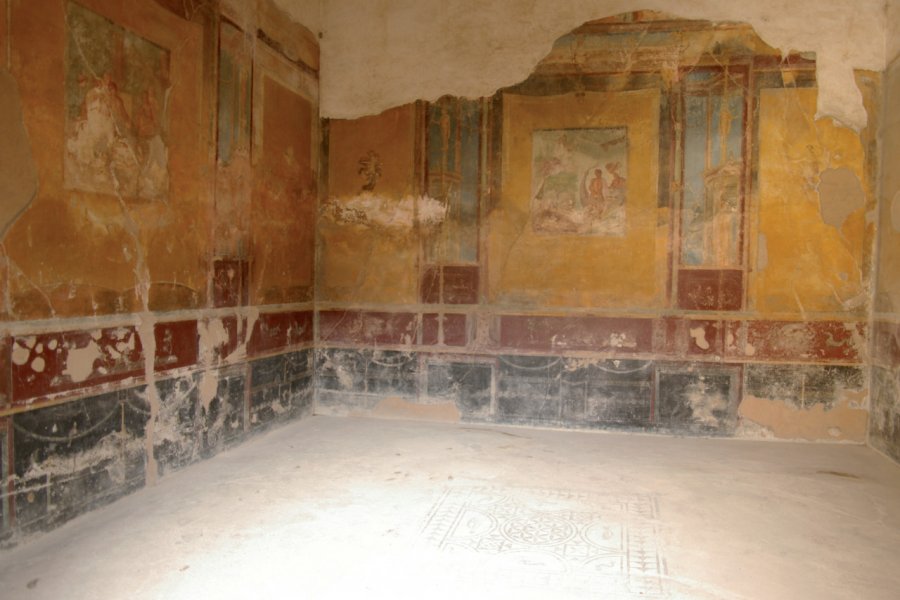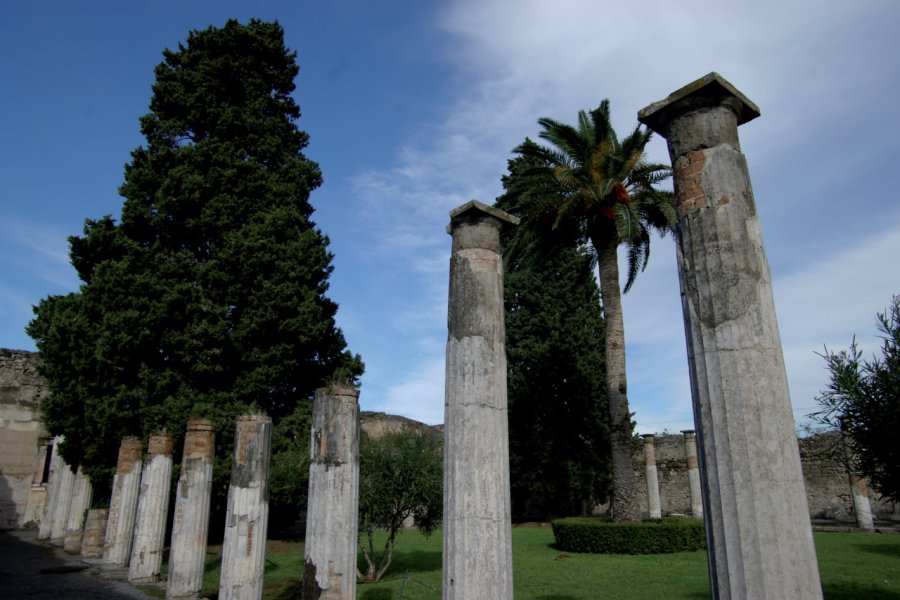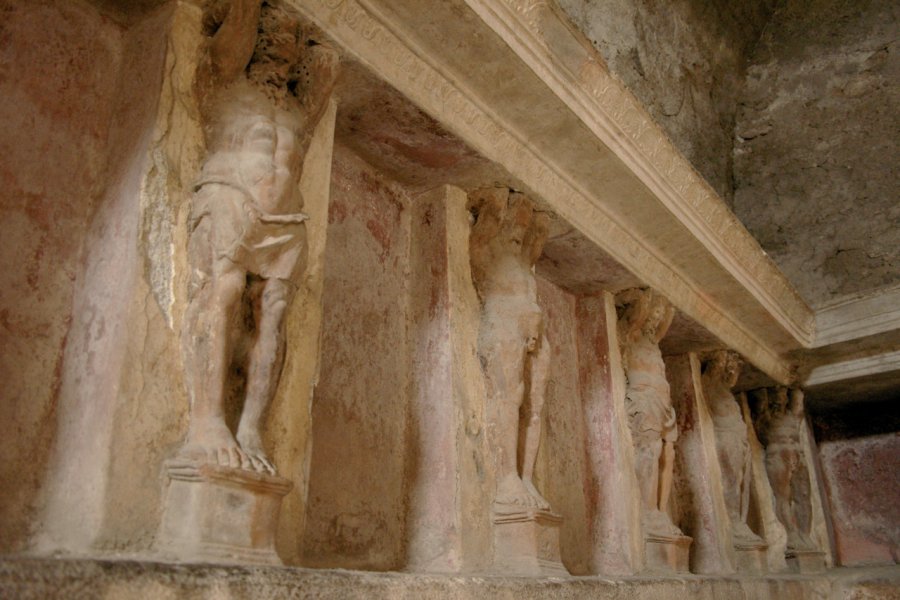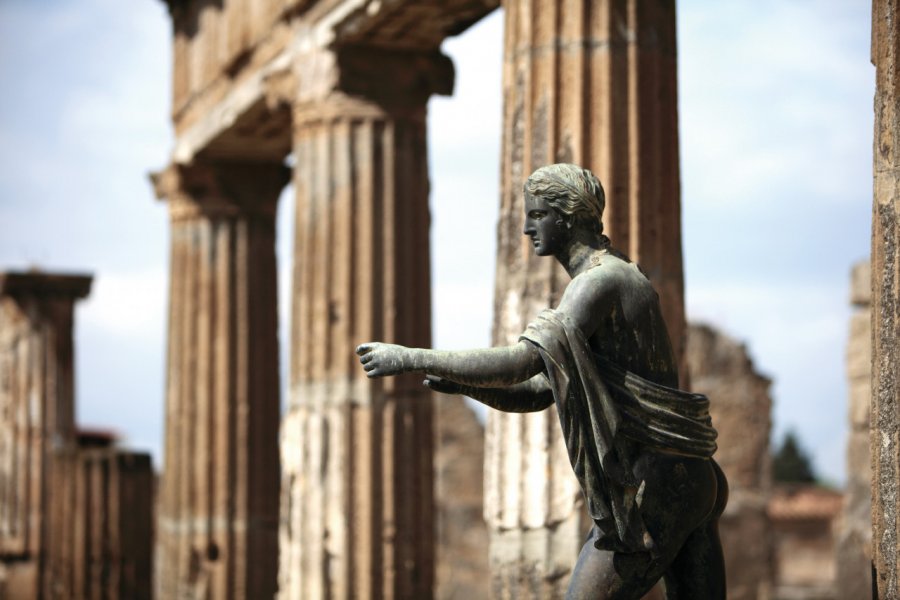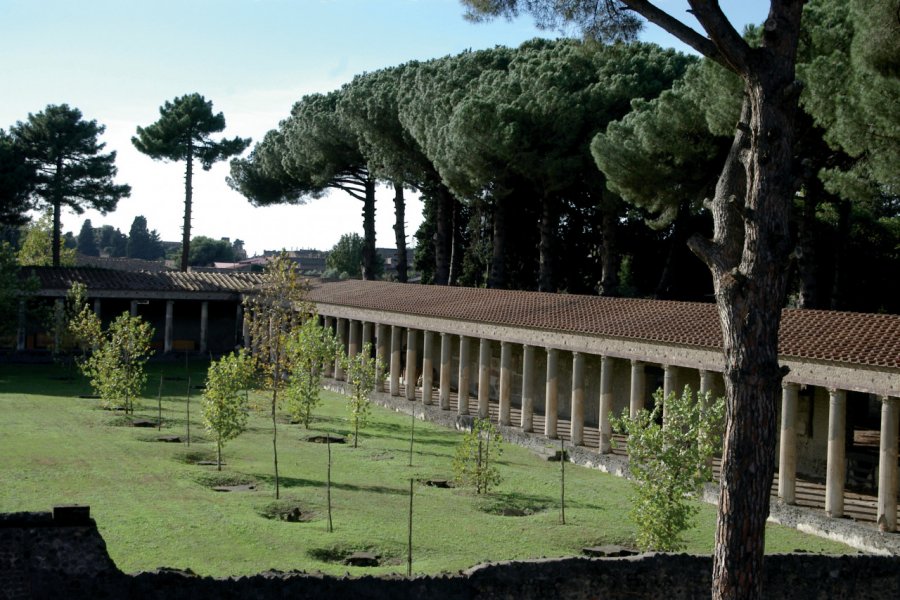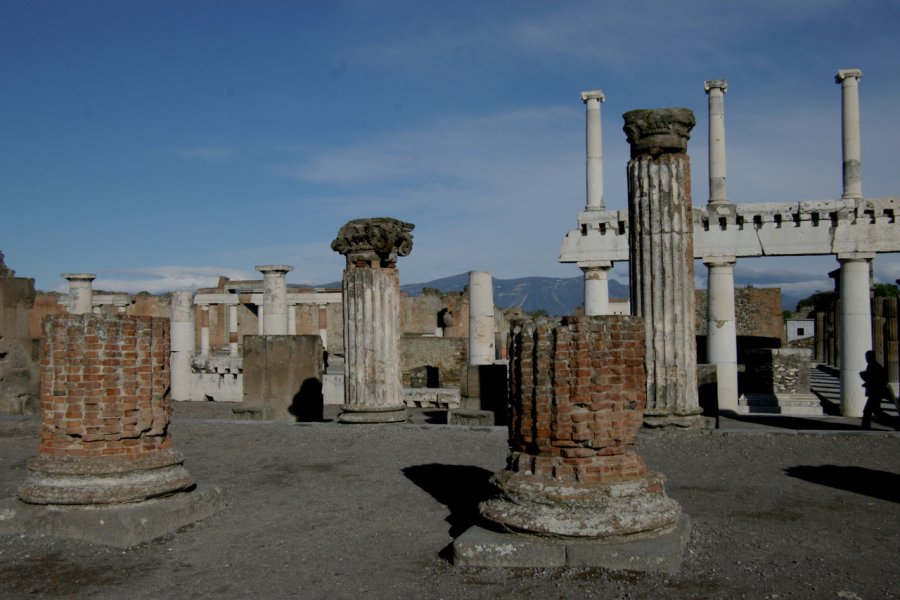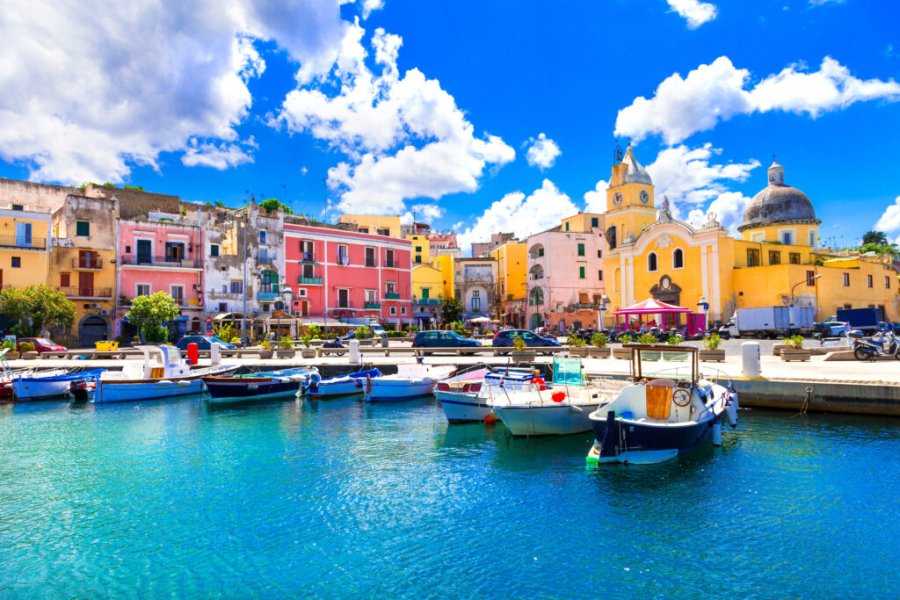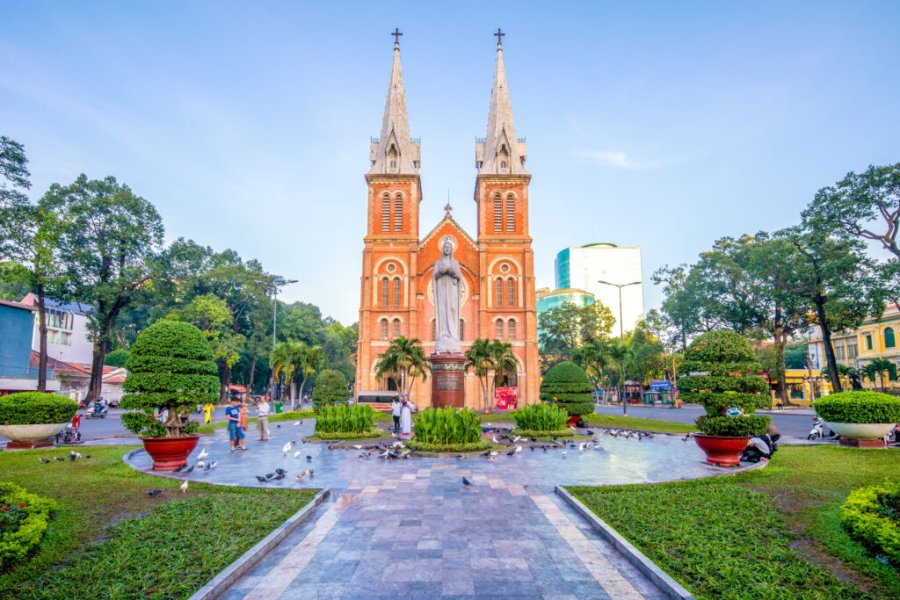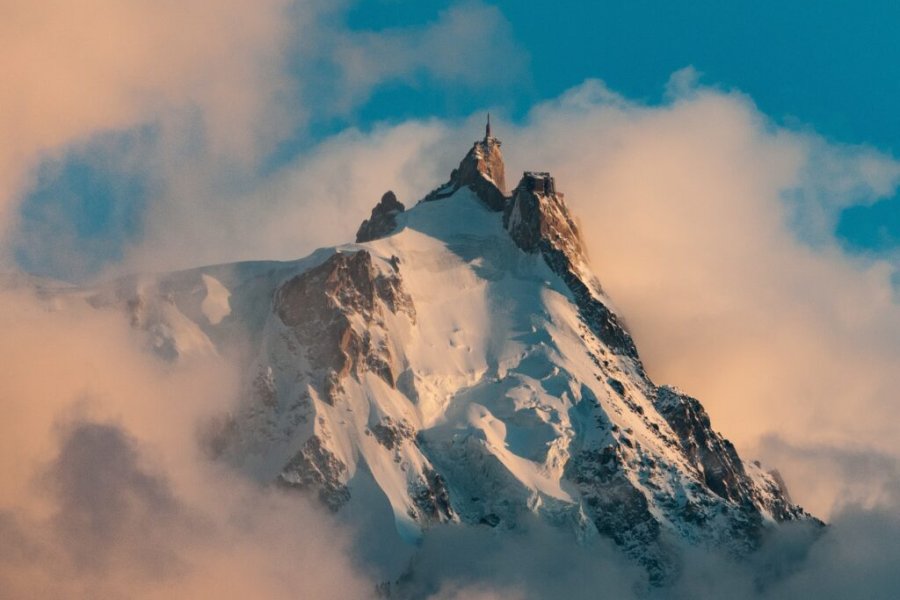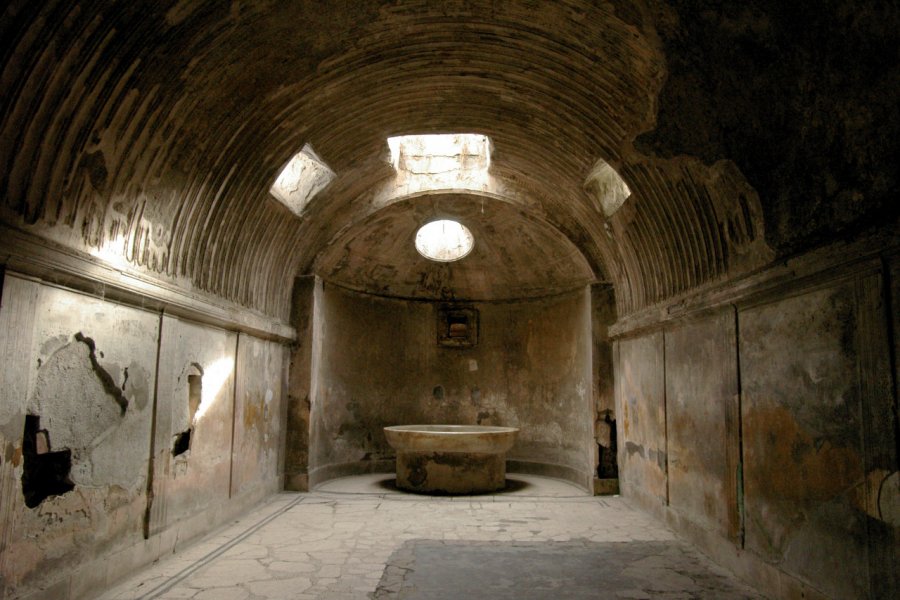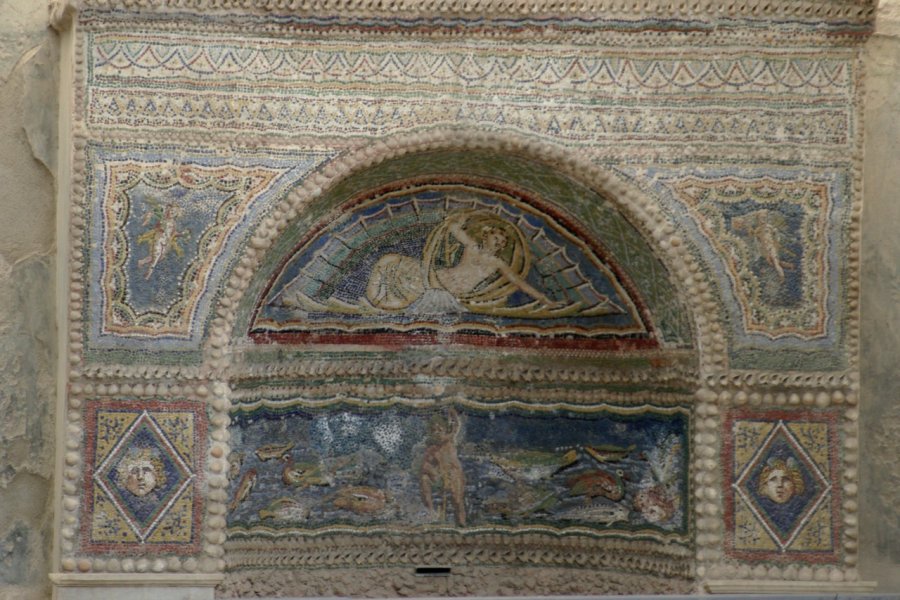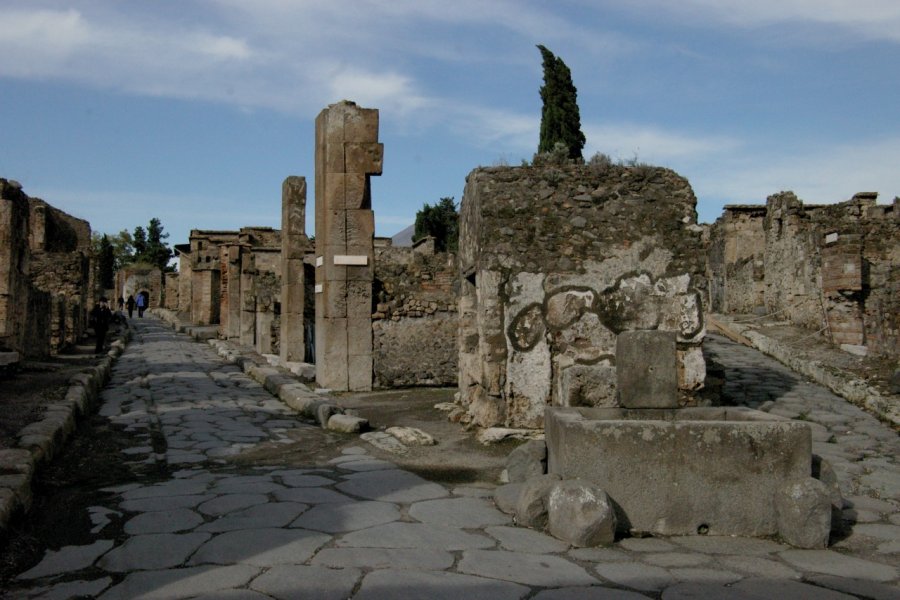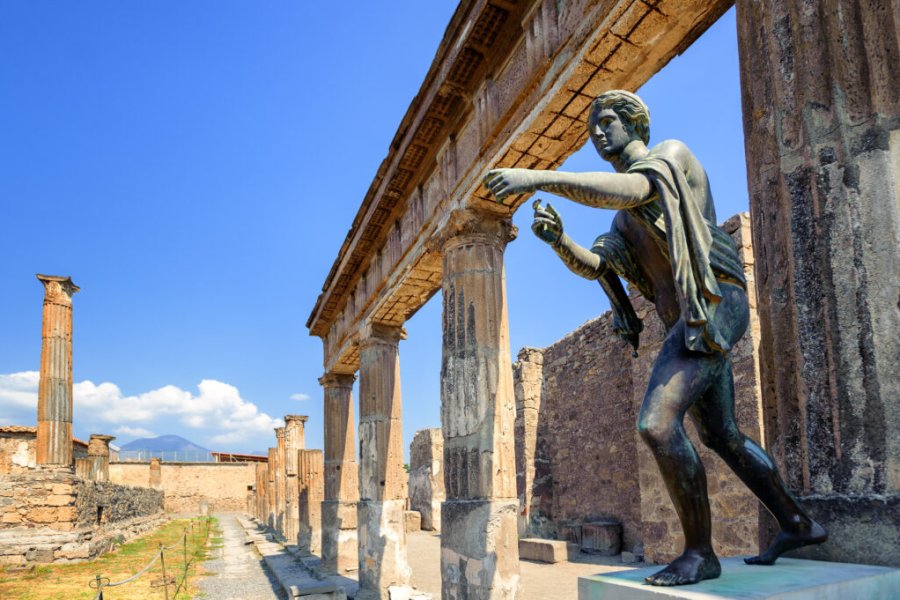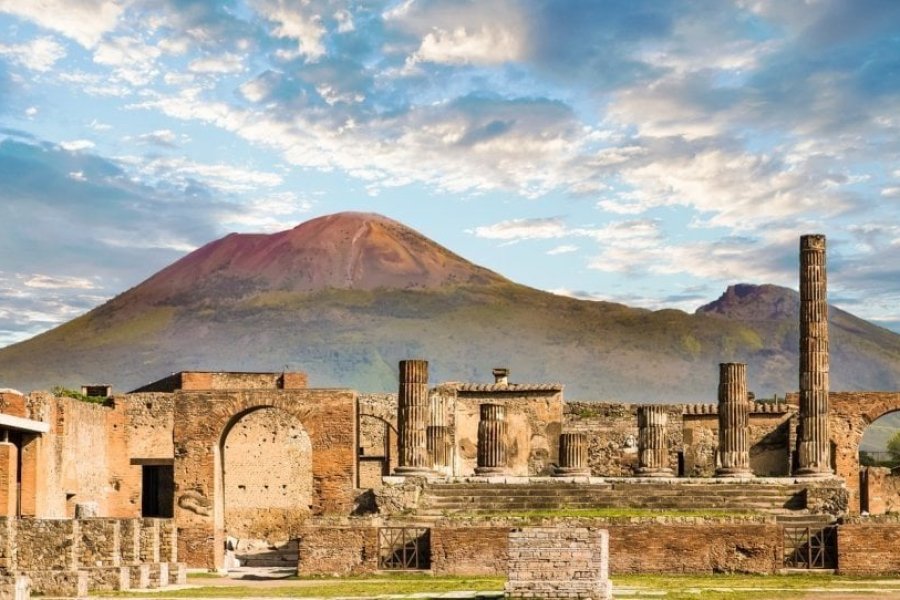Travel Guide Pompei
Ideally located on the southern slope of Vesuvius, at the top of a hill overlooking the Sarno Valley, Pompeii had all the characteristics of an ancient agricultural, commercial and industrial area. Surrounded by solid walls, Pompeii prospered, expanded and reached a high artistic level.
Architecture, sculpture, mural painting frozen in the ashes of the cursed times are strong evidence today of these exchanges with neighbouring Greece. The social organization changed with the arrival of the Romans, and so did the city. The Romans built a temple in honour of Augustus and another for Vespasian. Pompeii is redoing its beauty, renovating its forum, the temple of Jupiter, its theatres, its public monuments. Everything is going well in the best of all worlds. The Romans do not imagine that the fertile mountain, overlooking the Gulf of Naples, hosts a volcano.... Vesuvius' awakening was terrible when in 79, Pompeii disappeared under the ashes. Long unavailable, the site was discovered by archaeologists in the 18th century. Today, it is the most thorough in the world. Pompeii, beyond history and with its 30,000 inhabitants, now belongs to the great suburbs of Naples. In addition to the ancient city, the sanctuary of the Madonna del Rosario is worth a look. Once you have completed these two visits, move on. The rest is of little interest.
What to visit Pompei?
When to go to Pompei?
Thanks to a mild climate in winter, and very sunny in summer, Pompeii is a city that can be visited all year round. Knowing when to go to Pompeii is therefore simple. However, there are two distinct tourist seasons. The high season naturally corresponds to summer. To avoid crowds, archaeology aficionados will therefore prefer May, June, September and October. In winter, tourist flows are significantly reduced; it is better to take the opportunity to visit the site quietly. In autumn and winter, many establishments in the region close, especially in November and early December (more difficult to find accommodation for small and medium-sized budgets).
Weather at the moment
The climate enjoyed by Pompeii and the Amalfi coast is much milder than that of France. All year round, the weather is pleasant. Summer is extremely hot and dry, even if the sea air cools the atmosphere a little. In winter, mercury rarely drops below 10°C in January. The most pleasant seasons remain spring and autumn, although occasionally the region may be subject to heavy but short rains.
The Italian currency is the euro. No problem of exchange or conversion, therefore! As far as the budget is concerned, Pompeii is an extremely popular tourist site. So don't expect to save much money. Good to know: in the restaurants, the prices do not include the service and the tableware. You will always be charged for these. Mineral water and bread are also subject to a supplement. Therefore, you should generally expect to pay an additional €3.
For a stay of less than three months, EU citizens only need a valid (or expired within the last five years) identity card or passport. For stays longer than three months, you will need to apply for a residence permit(permesso di soggiorno) which will be valid for five years.
Citizens of countries outside the European Union must apply for a short-stay visa, depending on the country: ask your embassy for information.
No special precautions to take for your stay in Pompey if you do not want to check that your vaccinations are up to date. Tap water is drinkable everywhere. Simply bring your usual medicine kit and good sun creams. In case of serious problems, rescue services are well organized in Pompeii and the region. Remember to bring your European health insurance card.
Practical information
- When to travel?
- Weather forecast
- Budget
- Formalities
- Health
- How to travel by yourself?
- How to get organized?
- Getting around
Media
How to go to Pompei? Our advice & tips
Many tour operators and receptives organize trips to discover the site of Pompeii. However, this will rarely be the only step of your stay and it will generally be combined with the visit of Naples, the Amalfi coast and other sites (Herculaneum, Oplontis, Boscoreale, Stabiae...). The visit to the site will then be included in the overall price of the stay.
It is very easy to get to Pompeii on your own, but you will have to go through Naples first. The city is easily accessible by plane, train or car. Public transportation and hotels are plentiful, so you can make your choice. In order to ensure the best rates, and to guarantee you a place to stay, remember to book your tickets and accommodation in advance. Tickets can be purchased at the entrance of the site, but are also available on the Internet.
Pompeii is relatively easy to reach, but you will usually have to go to Naples first. From Naples, it will take you between half an hour and an hour depending on the means of transportation chosen: car, train or bus. The visit of the site is done on foot. But maps and guides of the site will be available at the entrance of the ancient city.

